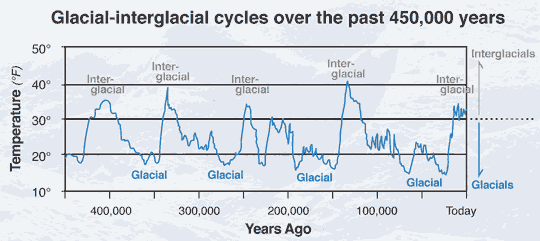Further FYI, EXCERPTS:
...
Happer on The Truth About Greenhouse Gases
...
The object of the Author in the following pages has been to collect the most remarkable instances of those moral epidemics which have been excited, sometimes by one cause and sometimes by another, and to show how easily the masses have been led astray, and how imitative and gregarious men are, even in their infatuations and crimes,” wrote Charles Mackay in the preface to the first edition of his
Extraordinary Popular Delusions and the Madness of Crowds. I want to discuss a contemporary moral epidemic: the notion that increasing atmospheric concentrations of greenhouse gases, notably carbon dioxide, will have disastrous consequences for mankind and for the planet. The “climate crusade” is one characterized by true believers, opportunists, cynics, money-hungry governments, manipulators of various types—even children’s crusades—all based on contested science and dubious claims.
I am a strong supporter of a clean environment. We need to be vigilant to keep our land, air, and waters free of real pollution, particulates, heavy metals, and pathogens, but carbon dioxide (CO2 ) is not one of these pollutants. Carbon is the stuff of life. Our bodies are made of carbon. A normal human exhales around 1 kg of CO2 (the simplest chemically stable molecule of carbon in the earth’s atmosphere) per day. Before the industrial period, the concentration of CO2 in the atmosphere was 270 ppm. At the present time, the concentration is about 390 ppm, 0.039 percent of all atmospheric molecules and less than 1 percent of that in our breath. About fifty million years ago, a brief moment in the long history of life on earth, geological evidence indicates, CO2 levels were several thousand ppm, much higher than now. And life flourished abundantly.
Now the Environmental Protection Agency wants to regulate atmospheric CO2 as a “pollutant.” According to my
Webster’s New Collegiate Dictionary, to pollute is “to make or render unclean, to defile, to desecrate, to profane.” By breathing are we rendering the air unclean, defiling or desecrating it? Efforts are underway to remedy the old-fashioned, restrictive definition of pollution. The current Wikipedia entry on air pollution, for example, now asserts that pollution includes: “carbon dioxide (CO2)—a colorless, odorless, non-toxic greenhouse gas associated with ocean acidification, emitted from sources such as combustion, cement production, and respiration.”
As far as green plants are concerned, CO2 is not a pollutant, but part of their daily bread—like water, sunlight, nitrogen, and other essential elements. Most green plants evolved at CO2 levels of several thousand ppm, many times higher than now. Plants grow better and have better flowers and fruit at higher levels. Commercial greenhouse operators recognize this when they artificially increase the concentrations inside their greenhouses to over 1000 ppm.
...
The minimum acceptable value for plants is not that much below the 270 ppm preindustrial value. It is possible that this is not enough, that we are better off with our current level, and would be better off with more still. There is evidence that California orange groves are about 30 percent more productive today than they were 150 years ago because of the increase of atmospheric CO2.
Although human beings and many other animals would do well with no CO2 at all in the air, there is an upper limit that we can tolerate. Inhaling air with a concentration of a few percent, similar to the concentration of the air we exhale, hinders the diffusional exchange of CO2 between the blood and gas in the lung. Both the United States Navy (for submariners) and nasa (for astronauts) have performed extensive studies of human tolerance to CO2. As a result of these studies, the Navy recommends an upper limit of about 8000 ppm for cruises of ninety days, and nasa recommends an upper limit of 5000 ppm for missions of one thousand days, both assuming a total pressure of one atmosphere. Higher levels are acceptable for missions of only a few days.
We conclude that atmospheric CO2 levels should be above 150 ppm to avoid harming green plants and below about 5000 ppm to avoid harming people. That is a very wide range, and our atmosphere is much closer to the lower end than to the upper end. The current rate of burning fossil fuels adds about 2 ppm per year to the atmosphere, so that getting from the current level to 1000 ppm would take about 300 years—and 1000 ppm is still less than what most plants would prefer, and much less than either the nasa or the Navy limit for human beings.
Yet there are strident calls for immediately stopping further increases in CO2 levels and reducing the current level. As we have discussed, animals would not even notice a doubling of CO2 and plants would love it. The supposed reason for limiting it is to stop global warming—or, since the predicted warming has failed to be nearly as large as computer models forecast, to stop climate change. Climate change itself has been embarrassingly uneventful, so another rationale for reducing CO2 is now promoted: to stop the hypothetical increase of extreme climate events like hurricanes or tornados. But this does not necessarily follow. The frequency of extreme events has either not changed or has decreased in the 150 years that CO2 levels have increased from 270 to 390 ppm.
Let me turn to some of the problems the non-pollutant CO2 is supposed to cause. More CO2 is supposed to cause flooded cities, parched agriculture, tropical diseases in Alaska, etc., and even an epidemic of kidney stones. It does indeed cause some warming of our planet, and we should thank Providence for that, because without the greenhouse warming of CO2 and its more potent partners, water vapor and clouds, the earth would be too cold to sustain its current abundance of life.
Other things being equal, more CO2 will cause more warming. The question is how much warming, and whether the increased CO2 and the warming it causes will be good or bad for the planet.
The argument starts something like this. CO2 levels have increased from about 280 ppm to 390 ppm over the past 150 years or so, and the earth has warmed by about 0.8 degree Celsius during that time. Therefore the warming is due to CO2. But correlation is not causation. Roosters crow every morning at sunrise, but that does not mean the rooster caused the sun to rise. The sun will still rise on Monday if you decide to have the rooster for Sunday dinner.
The earth’s climate has always been changing. Our present global warming is not at all unusual by the standards of geological history, and it is probably benefiting the biosphere. Indeed, there is very little correlation between the estimates of CO2 and of the earth’s temperature over the past 550 million years (the “Phanerozoic” period). The message is clear that several factors must influence the earth’s temperature, and that while CO2 is one of these factors, it is seldom the dominant one. The other factors are not well understood. Plausible candidates are spontaneous variations of the complicated fluid flow patterns in the oceans and atmosphere of the earth—perhaps influenced by continental drift, volcanoes, variations of the earth’s orbital parameters (ellipticity, spin-axis orientation, etc.), asteroid and comet impacts, variations in the sun’s output (not only the visible radiation but the amount of ultraviolet light, and the solar wind with its magnetic field), variations in cosmic rays leading to variations in cloud cover, and other causes.
The existence of the little ice age and the medieval warm period were an embarrassment to the global-warming establishment, because they showed that the current warming is almost indistinguishable from previous warmings and coolings that had nothing to do with burning fossil fuel. The organization charged with producing scientific support for the climate change crusade, the Intergovernmental Panel on Climate Change (IPCC), finally found a solution. They rewrote the climate history of the past 1000 years with the celebrated “hockey stick” temperature record.
...
The dubious science of the climate crusaders. by William Happer (from First Things) William Happer is the Cyrus Fogg Brackett Professor of Physics at Princeton University. The object of the Author …

wattsupwiththat.com














